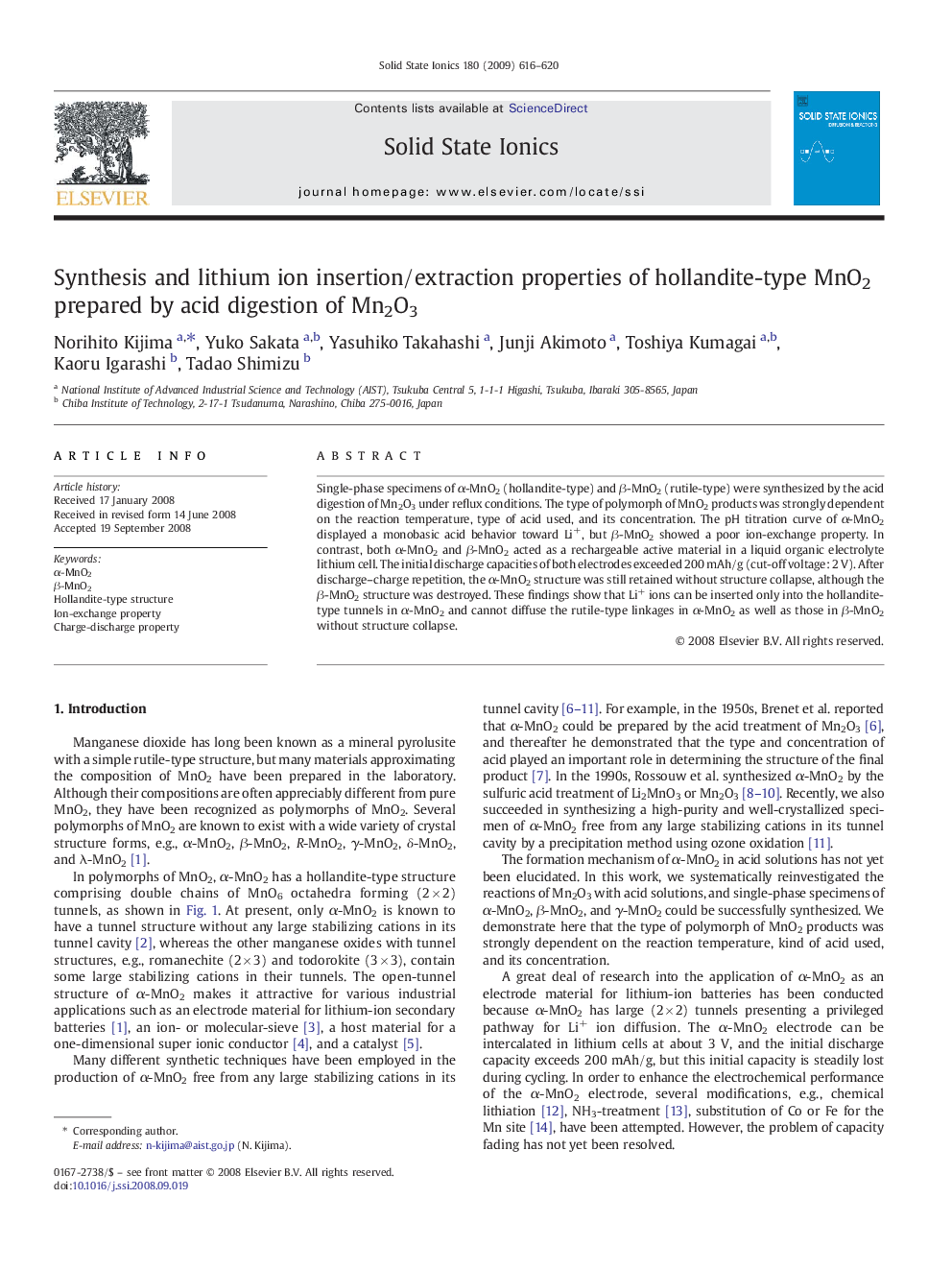| Article ID | Journal | Published Year | Pages | File Type |
|---|---|---|---|---|
| 1297889 | Solid State Ionics | 2009 | 5 Pages |
Abstract
Single-phase specimens of α-MnO2 (hollandite-type) and β-MnO2 (rutile-type) were synthesized by the acid digestion of Mn2O3 under reflux conditions. The type of polymorph of MnO2 products was strongly dependent on the reaction temperature, type of acid used, and its concentration. The pH titration curve of α-MnO2 displayed a monobasic acid behavior toward Li+, but β-MnO2 showed a poor ion-exchange property. In contrast, both α-MnO2 and β-MnO2 acted as a rechargeable active material in a liquid organic electrolyte lithium cell. The initial discharge capacities of both electrodes exceeded 200 mAh/g (cut-off voltage: 2 V). After discharge-charge repetition, the α-MnO2 structure was still retained without structure collapse, although the β-MnO2 structure was destroyed. These findings show that Li+ ions can be inserted only into the hollandite-type tunnels in α-MnO2 and cannot diffuse the rutile-type linkages in α-MnO2 as well as those in β-MnO2 without structure collapse.
Related Topics
Physical Sciences and Engineering
Chemistry
Electrochemistry
Authors
Norihito Kijima, Yuko Sakata, Yasuhiko Takahashi, Junji Akimoto, Toshiya Kumagai, Kaoru Igarashi, Tadao Shimizu,
